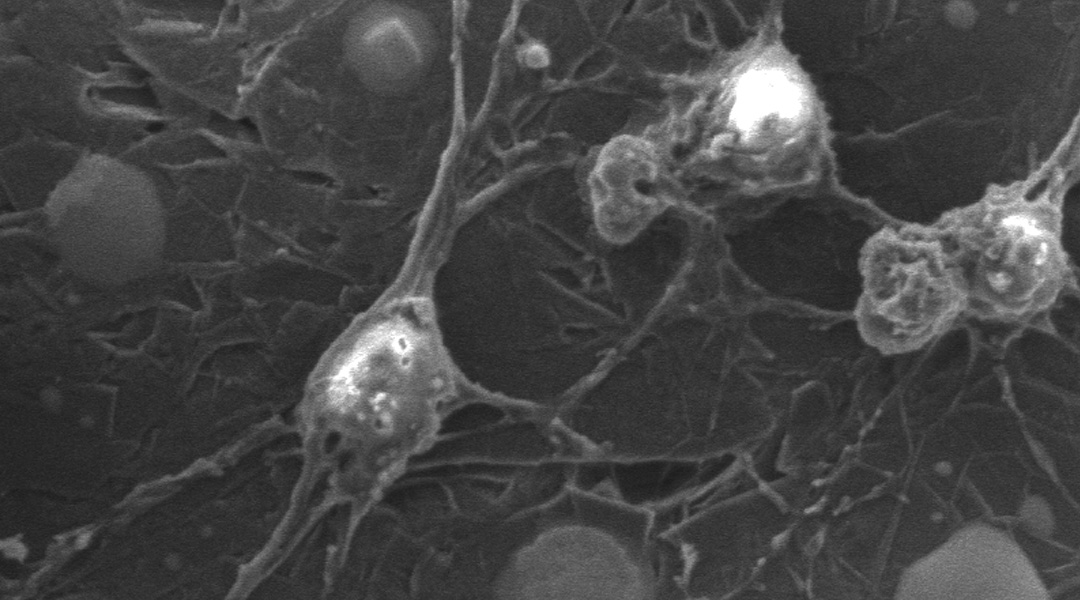Scientists have taken a step closer toward a treatment to repair damaged spinal cord tissue with a wireless patch that delivers electrical pulses to stem cells. The device could overcome some major hurdles in the path to developing a therapy that could one day be used to treat paralysis.
“Currently, there is no effective therapy that can cure or reverse [spinal cord injury] because spinal neurons are not regenerable in adults,” said Jichuan Qiu, professor at Shandong University.
Stem cells hold promise for regenerative medicine thanks to their ability to differentiate into any type of cell — this naturally occurring process can be harnessed to replace dead or damaged cells with new, functional cells.
When it comes to spinal cord injuries, stem cells transplanted into damaged nerves can be used to hypothetically differentiate into functional neurons. However, having neural stem cells do this inside the body is much more challenging than in a laboratory setting. This is because the complex cocktail of molecules surrounding the stem cells in an injury site can limit their ability to differentiate properly.
A shock to boost healing
One of the most effective methods to improve this ability consists of delivering electrical pulses to the stem cells. This method not only helps the cells differentiate, but also promotes the formation of synapses or junctions between neurons that can lengthen their survival.
Despite its promise, there is one major challenge when it comes to delivering electric pulses to stem cells inside the spinal cord.
“Conventional electrical stimulation generally involves wires and electrodes, which require additional surgery. The wires, electrodes, as well as the surgery, may cause secondary injuries, inflammation, pain, and infection,” said Qiu.
To overcome this, the scientists sought to develop a wireless alternative to boost efforts to repair the spinal cord.
Stimulating stem cells remotely
The electromagnetic patch developed by Qiu and colleagues can deliver electric pulses to stem cells placed on the patch remotely. While the patch requires surgical implantation, the lack of wires and the use of a biocompatible material are designed to prevent it from further damaging the spinal cord tissue and minimizing risk of infection and other unwanted side effects.
The patch is made out of graphite nanosheets — a material that conducts electricity and is not toxic to cells — and generates electrical signals when placed in a magnetic field, which can be created outside of the body using rotating magnets.
By changing the speed at which the magnets rotate, the researchers were able to tune the strength and frequency of the electrical signal that was delivered to the stem cells grown on the patch.
In mouse models, the patch was shown to significantly improve healing, and even acted as a protective layer for the spinal cord. The patch was also found to not trigger inflammation even 28 days after surgery, and though this needs confirmation in longer-term studies, the team suggests that the patch may not require removal, minimizing the total number of surgeries typical with these devices.
When looking at the cells growing on the implants, the scientists reported that the electric pulses increased the proportion of stem cells that differentiated into mature neurons from 12.5% to 33.7%.
The conclusion that the researchers came to is that the combination of stem cell therapy and electric stimulation can have a much greater effect in the recovery of nerve tissue after a spinal cord injury than using any of the two methods separately.
“This electromagnetic cellularized patch holds great promise for the remote treatment of [spinal cord injury] and other diseases of the central and peripheral nervous systems,” Qiu concluded.
Further testing and clinical trials are required before this therapy will find application in a wider clinical setting. How long this takes will depend on a number of factors, but the foundations are set to hopefully one day help treat this debilitating injury.
Reference: Liang Wang et al., Electromagnetic Cellularized Patch with Wirelessly Electrical Stimulation for Promoting Neuronal Differentiation and Spinal Cord Injury Repair, Advanced Science (2024). DOI: 10.1002/advs.202307527

















